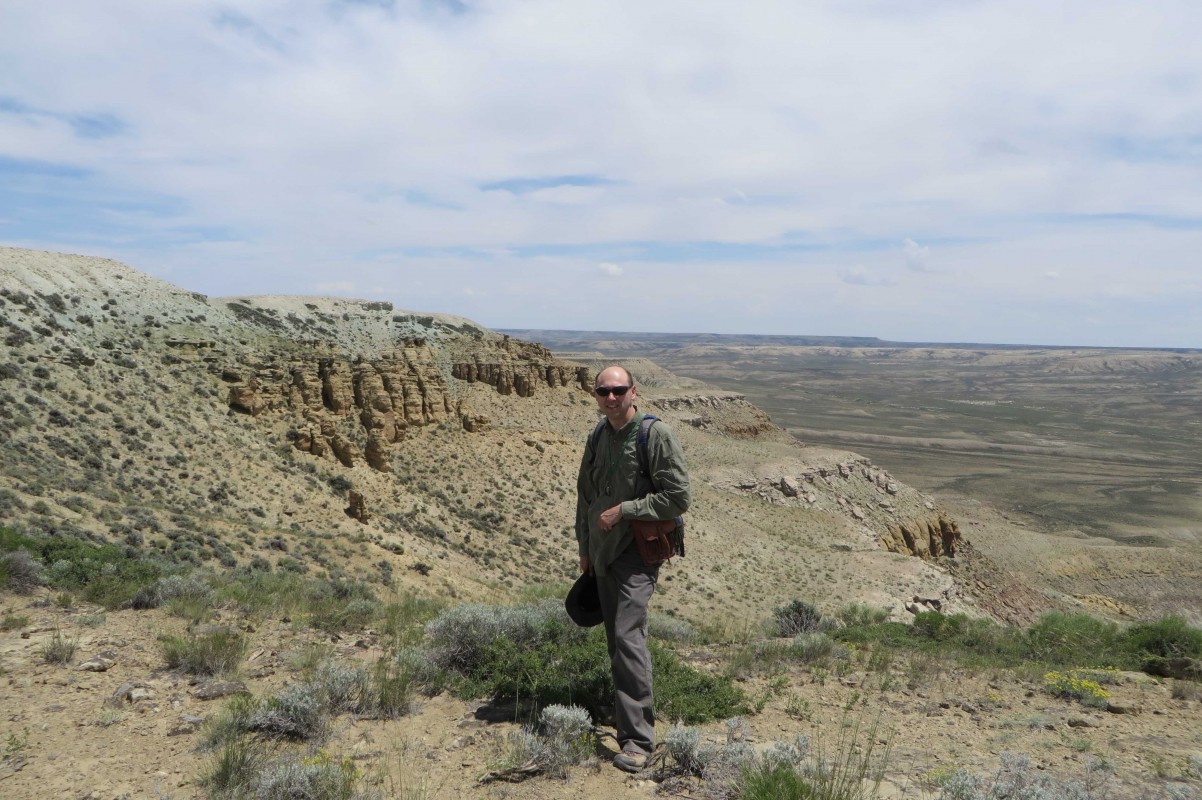Deep questions: Pietras’ research team explores the geologic past and shapes futures

Look at the land around you, apart from the roofs and treetops, or the crisscrossing roads. What forces shaped those green hills and carved the deep lakes, and over what vast span of time? And what historical record lies far beneath the surface, snapshots of our planet’s past?
During his seven years with the Department Geological Sciences, Associate Professor Jeffrey Pietras ‘96 has developed a broad research program that seeks to answer those questions.
Overall, his research program focuses on how the Earth’s surface changes through time, and the controlling processes behind those changes, such as plate tectonics, climate and geomorphic landscape evolution. These changes are recorded in sedimentary rocks, laid down by rivers, lakes and oceans, and the basins where they are deposited.
His research program has three main components:
- sedimentology (the study of sediment), stratigraphy (the study of rock layers) and the geochemistry of ancient lake deposits
- modeling the subsidence model of sedimentary basins, which concerns how basins sink into the earth
- and the sedimentology, stratigraphy and geochemistry of marine mudstones, a type of sedimentary rock formed, as the name implies, from mud.
“Applications for this research include mineral and energy exploration and providing geologic context to the impact of predicted climate change and other natural hazards. Each of these represents important challenges facing humanity,” Pietras explained.
There is another application, too. The program has given many young researchers their start in the field, leading to publication in academic journals and career opportunities. In fact, each of Pietras’ first six graduate students finished with jobs in the energy sector, environmental consulting or teaching in hand.
“I left the oil and gas industry for the academic freedom to study the topics that are interesting to me and to conduct that research with students,” Pietras said. “I thought I would come back to Binghamton to teach the next generation, but oftentimes they are teaching me!”
Soil, rock and water
Both graduate and undergraduate students have taken part in a wide array of research opportunities under Pietras’ guidance, both locally and across the country.
Pietras joined Joshua Novello, MS ’20, in the wilds of Wyoming last year for fieldwork, in a place so remote that coyotes circled their camp every night. Meanwhile, PhD students Tyler Rust and Andrew Jacobus continue to increase our understanding of the Utica Shale and Trenton Group — a stratigraphic unit of limestone dating from 450 million years ago in the Ordovician period — here in New York state.
For the lacustrine, or lake, basin portion of the project, Ryan Kenyon, MS ’15, and Novello both studied the 50 million-year-old Green River Formation in Wyoming. Pietras also developed a new collaboration with geologists at the Utah geologic Survey and the University of Utah to study lacustrine deposits in the Uinta Basin, expanding the project beyond Wyoming.
Ryan Brembs, MS ’17, and Abby Dennett ’19 both worked on research connected to the Uinta Basin and osmium isotope stratigraphy, which studies the presence of osmium isotopes in rock layers; Dennet is now working as a geologist with Hess in Texas. Pietras received a grant from the Petroleum Research Fund to study the osmium isotope stratigraphy of shale as a way to trace changes in lake-water chemistry, and published the findings in the journal Palaeogeography, Palaeoclimatology, Palaeoecology in collaboration with Professor David Selby at Durham University.
Former student Brandon Tufano, MS ’16, and Pietras developed a new approach to subsidence modeling, published in The Geological Society of America Bulletin. Work done by undergraduate Claire Atlas ’19 led to a new project: developing a needed technique to vary the density of topographic loads within flexural models, so that mountain belts, for example, aren’t considered to have the same density as sediments. PhD student William Arnuk helped modify the department’s flexural modeling software to meet this need.
Pietras’ team is also investigating the Utica Shale in New York state, which has proved more interesting than just a simple monotonous black shale. Students and alumni who have proved instrumental in this research include Ethan Spiegel, MS ’16, Daniel Miserendino, MS ’17, Rust, Jacobus and Josefina Vizcaino, a Fulbright Scholar from Argentina with experience in the oil and gas industry. Undergraduate students also play an important role in collecting data, including Louis Meyer ’16, Mike Slywkanycz ’17 and Deanna Amoriello ’19.
The future not only holds fascinating research underground, but underwater. Through a grant from the Harpur Dean’s Office, Pietras and Distinguished Professor Tim Lowenstein purchased a remotely operated underwater vehicle. Thanks to funding through Binghamton’s First-Year Research Immersion (FRI) program and startup dollars from Pietras and Geophysics and Remote Sensing Laboratory Director Timothy de Smet, the vehicle has been equipped with a high-definition video camera and sensors that register depth, temperature, conductivity, pH, oxidation-reduction potential and chlorophyll.
The vehicle will be used to investigate chemical sediments and deposits in Utah’s Great Salt Lake and to construct 3D models of New York’s Green Lake, both in collaboration with program alumni: Elliott Jagniecki, PhD ’14, of the Utah Geological Survey for the former and, for the latter, Research Assistant Professor Jonathon Schmitkons, PhD ’16, of FRI. Pietras and de Smet will also work together to investigate harmful algal blooms in the Finger Lakes.
“It has been quite a ride building my research program over the past seven years,” Pietras reflected. “We have had many successes and stumbles, but the future is there, waiting in the geologic past for us to discover.”
